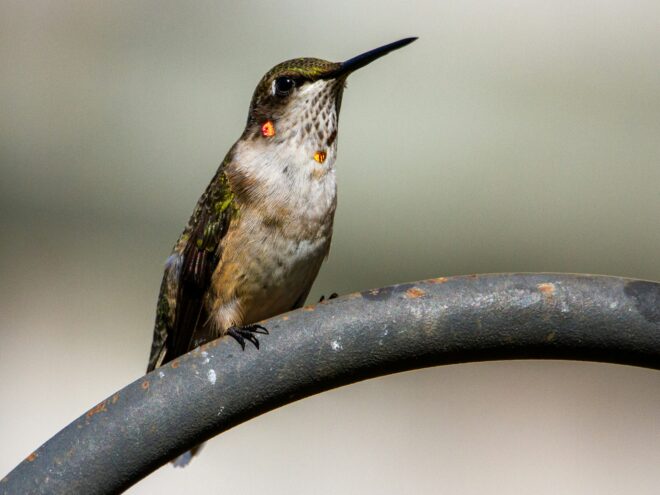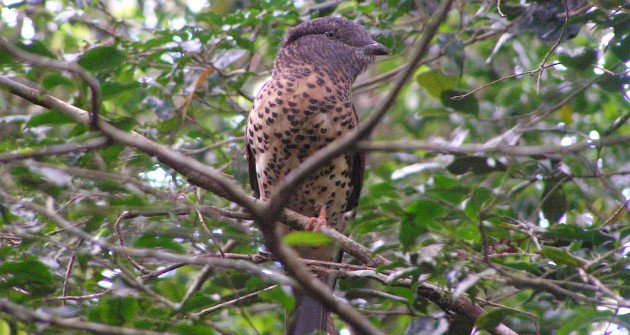PROTECT YOUR DNA WITH QUANTUM TECHNOLOGY
Orgo-Life the new way to the future Advertising by AdpathwayIn the vast tapestry of North American wildlife, few creatures inspire as much awe and bewilderment as the Ruby-throated Hummingbird. These tiny, flitting creatures, weighing less than a penny and barely longer than your thumb, spend their summers darting among the flowers and feeders of backyards across the eastern and central United States and Canada. Come autumn, however, an extraordinary transformation occurs, and they embark on one of the most astonishing migratory feats on the planet.
Many Ruby-throated Hummingbirds undertake a non-stop, over-water flight across the Gulf of Mexico. This isn’t a short hop; it spans approximately 500 to 600 miles of open ocean, without a single stop for rest or food. For birds that must eat roughly every 10-15 minutes during their waking hours to fuel their hyperactive metabolism, this single leg of their migration represents an almost unbelievable challenge. Yet, they complete it successfully, year after year, and end up traveling a total migratory distance that can exceed 3,000 miles from their northern breeding grounds to their wintering territories in Central America. What’s even more astounding, is that they travel this distance twice a year, as around 6 months later they undertake the return journey.
The question isn’t just how they do it, but why they would undertake such a perilous journey. The answer lies in a combination of evolutionary pressures, biological adaptations, and an instinctual drive that pushes these diminutive birds to the very limits of their endurance. Unraveling the secrets of their incredible journey reveals a profound story of survival, a testament to the power of natural selection and the sheer grit of one of nature’s smallest long-distance champions.
 Photo by Imogen Warren
Photo by Imogen WarrenThe Why – An Evolutionary Imperative
The primary driving force behind the Ruby-throated Hummingbird’s epic migration is food scarcity. During the spring and summer, the eastern and central U.S. and Canada offer an abundance of flowering plants and the small insects that hummingbirds feed on. The long daylight hours of summer also provide ample foraging time. This rich food supply allows hummingbirds to breed successfully and raise their young.
As autumn arrives, temperatures drop, and nectar-producing flowers wither and die. Insect populations dwindle. Staying in their northern breeding grounds would mean certain starvation. Central America and Mexico, their wintering grounds, offer a consistent supply of tropical flowers and insects, providing a stable, warm environment where food is consistently available.
While the journey is risky, the benefits of migrating are enormous. Breeding in the northern latitudes offers advantages such as longer daylight hours for foraging and raising multiple broods, fewer parasites and diseases than in tropical regions, and potentially less competition for nesting sites and food during the crucial breeding season. Therefore, the migration isn’t a choice; it’s a fundamental survival strategy, a hardwired imperative driven by the seasonal ebb and flow of their vital food resources. They must leave to survive the winter, and they must return north to exploit the temporary, but bountiful, summer resources for breeding.
 Photo by Joshua J. Cotten
Photo by Joshua J. CottenThe How – A Masterclass in Physiological Adaptation and Preparation
The fact that a bird weighing 3-4 grams (roughly two paperclips) can cross hundreds of miles of open ocean is nothing short of miraculous. This feat is possible due to a series of remarkable physiological adaptations and meticulous pre-migratory preparations.
Hyper-Metabolism and Fuel Efficiency
Hummingbirds already possess an astonishing metabolism, necessary to power their incredibly fast wing beats and maintain their high body temperature (around 104°F). For migration, this metabolism becomes an engine of unparalleled efficiency. Unlike human athletes who carb load, hummingbirds fat load. Days and weeks before migration, they enter a state of hyperphagia, feeding almost continuously. They can double their body weight, accumulating a layer of fat that accounts for 25-50% of their total mass. This fat is the perfect migratory fuel because it provides twice the energy per gram compared to carbohydrates or protein. Crucially, metabolizing fat also produces metabolic water, helping to keep them hydrated during their non-stop flight over the water.
Their digestive and metabolic systems are incredibly efficient at converting nectar sugars into usable energy and storing excess as fat. Their mitochondria (the powerhouses of cells) are exceptionally dense in their flight muscles, allowing for sustained, high-output aerobic respiration.
 Photo by Paul Crook
Photo by Paul CrookThe Torpor Advantage
While the Gulf crossing itself is non-stop, hummingbirds utilize a physiological state called torpor during their preparation and subsequent legs of the journey. Torpor is a state of reduced metabolic activity, similar to a mini-hibernation. During torpor, a hummingbird’s heart rate, breathing, and body temperature plummet (body temperature can drop from 104°F to as low as 68°F). This drastically conserves energy, especially on cold nights.
By entering torpor nightly during the weeks leading up to their Gulf crossing, they save precious energy that would otherwise be burned just staying warm. This allows them to accumulate fat reserves more effectively for the strenuous flight ahead. Importantly, they cannot enter torpor while in flight over the open ocean. If they did, they would literally fall out of the sky. This highlights the sheer determination required for the Gulf crossing. However, once they make landfall in the southern U.S. or Mexico, they will resume nightly torpor to conserve energy for the subsequent legs of their journey.
 Photo by Paul Crook
Photo by Paul CrookNavigational Genius
Hummingbirds undertake their journey alone, without parental guidance or flock leaders. Their navigational abilities are truly astounding. Like many migratory birds, hummingbirds are believed to possess a magnetic compass, an ability to sense the Earth’s geomagnetic field and use it for orientation. They likely use the sun’s position during the day and possibly star patterns at night (though this is less certain for hummingbirds compared to larger night migrants) to maintain their direction.
Some research also suggests birds may detect very low-frequency sounds (infrasound) generated by ocean waves or mountain ranges, or use their sense of smell to orient themselves. These are areas of ongoing research.
While they fly over the featureless Gulf, once they reach land, they rely on learned memory of landmarks, preferred stopover sites, and foraging patches from previous migrations. Banding studies have shown that individual hummingbirds often return to the exact same breeding territories and wintering grounds year after year.
 Photo by Imogen Warren
Photo by Imogen WarrenWeather Wisdom
Timing is everything for the Gulf crossing. A sudden strong headwind or a major storm system can be catastrophic for these tiny fliers. Hummingbirds are thought to wait for favorable weather systems, particularly a strong cold front moving through the U.S. southwards. These fronts are often followed by prevailing northerly winds and clear skies, providing a vital tailwind that significantly reduces the energetic cost of the overwater flight. While they wait for good conditions, they cannot wait indefinitely. There’s a balance between waiting for optimal winds and the physiological need to depart before food sources completely vanish. This decision-making process is a critical component of their migratory success.
In extreme cases, if caught in an unexpected storm, a hummingbird might attempt to land on an oil rig, a boat, or anything floating. These instances are rare and often desperate, highlighting the dangers of their journey.
 Photo by Paul Crook
Photo by Paul CrookThe Full Migratory Path: A Journey of Thousands of Miles
In late February and March, the Ruby-throated Hummingbirds begin their northward journey from Central America. Many will make their non-stop flight across the Gulf of Mexico, making landfall along the U.S. Gulf Coast (Texas, Louisiana, Mississippi, Alabama, Florida). Upon making landfall, they are often critically depleted of fat reserves. They immediately seek out nectar-rich flowers and feeders to refuel. This is why backyard feeders for hummingbirds along the Gulf Coast are so vital in early spring. However, the Gulf crossing is just one leg of the birds’ journey, albeit the most dramatic.
From the Gulf Coast, they continue their journey northward, often following the wave of green-up and the blooming of nectar-producing plants. They spread across the eastern and central U.S. and into southern Canada, arriving in their breeding grounds from late April to late May. Then, throughout the summer (May to August), they establish territories, mate, build nests, lay eggs (typically two, the size of a jelly bean), and raise one or two broods of young.
In late August and September, the southbound migration begins. Juveniles and adult males typically depart first, followed by adult females. They once again accumulate massive fat reserves. Many will funnel towards the Gulf Coast, ready for the perilous overwater flight, completing the remarkable 3,000-mile round trip.
 Photo by Paul Danese
Photo by Paul DaneseThe Challenges and Threats
Despite their incredible adaptations, the hummingbird’s migratory journey is fraught with perils. Unexpected cold snaps, prolonged rain, or strong headwind storms can deplete their energy reserves, leading to exhaustion and death. Once they hit land, crucial stopover sites along the migratory path, providing vital refueling stations, are increasingly threatened by human development and habitat destruction. Even when they find food, the use of pesticides can reduce insect populations, a critical protein source, especially for breeding birds and their young.
Shifting weather patterns and changes in the timing of flower blooms (phenology) can also cause problems, meaning that when hummingbirds arrive at stopover sites or breeding grounds they might find insufficient food. It appears that climate change is also causing changes to the Ruby-throated Hummingbirds’ migration patterns, with the birds arriving earlier and migrating slower.
 Photo by Skyler Ewing
Photo by Skyler EwingSupporting the Migratory Marvels
As backyard enthusiasts, we play a crucial role in supporting these tiny travelers. Keep feeders clean and consistently filled, especially during peak migration periods (early spring along the Gulf Coast, and late summer/early autumn across the U.S.). This provides a vital, concentrated energy source.
Another action you can take is to cultivate nectar-rich native plants that bloom throughout the spring, summer, and fall. This offers natural food sources and supports the insects they also rely on. Examples include bee balm, cardinal flower, phlox, coneflowers, and salvias. Do not use pesticides in your yard, as they can harm hummingbirds directly or eliminate their insect food source.
Final Thoughts
The Ruby-throated Hummingbird’s annual migration is one of nature’s most epic sagas, a triumph of endurance and adaptation packed into a minuscule package. Their ability to travel thousands of miles, including a non-stop flight across the Gulf of Mexico, is a testament to the evolutionary pressures that have sculpted them into such resilient survivors. Understanding the why and how of their journey deepens our appreciation for these tiny invaders of our airspace. They are not just pretty faces; they are long-distance champions, embodying the tireless spirit of migration that connects our backyards to distant tropical lands, a truly inspiring miracle of the avian world.























 English (US) ·
English (US) ·  French (CA) ·
French (CA) ·